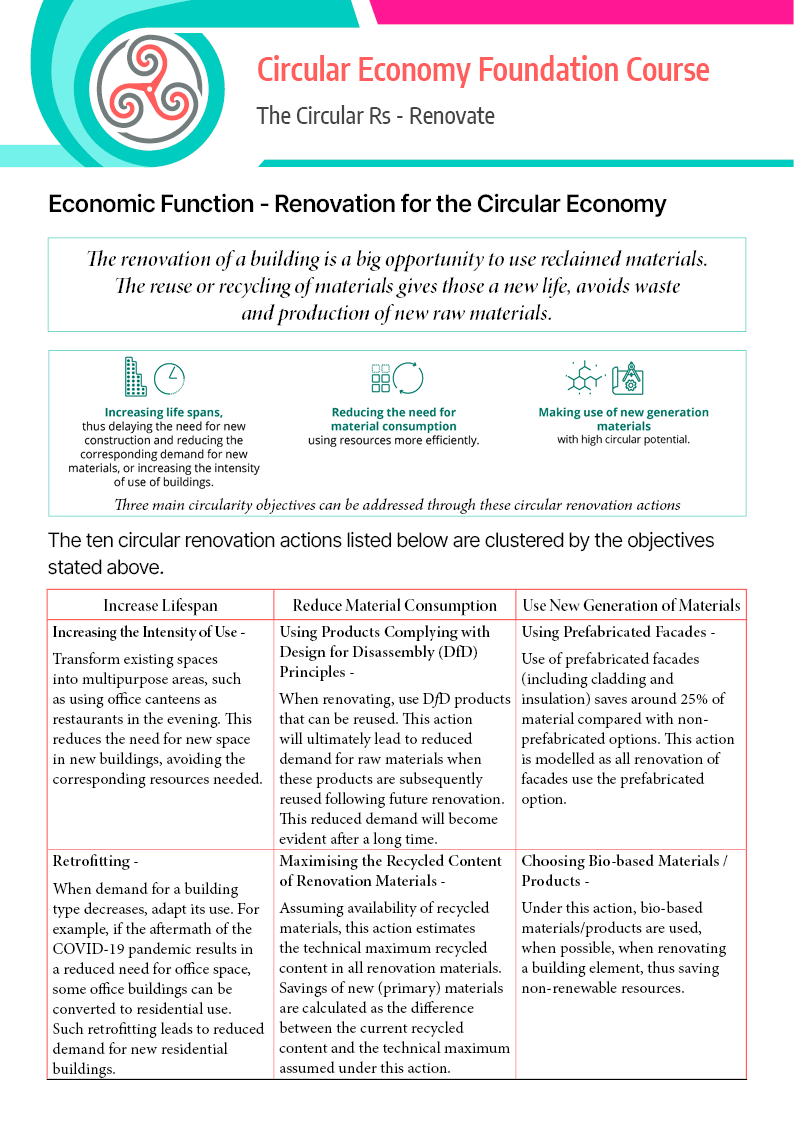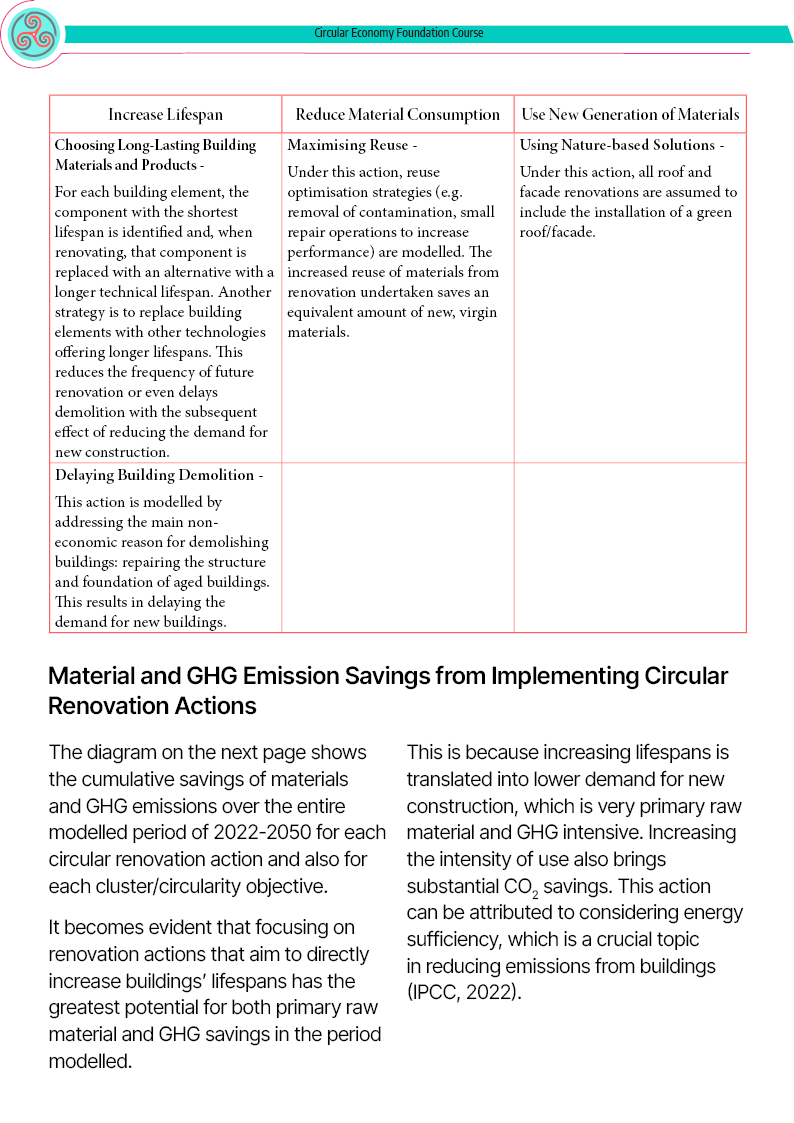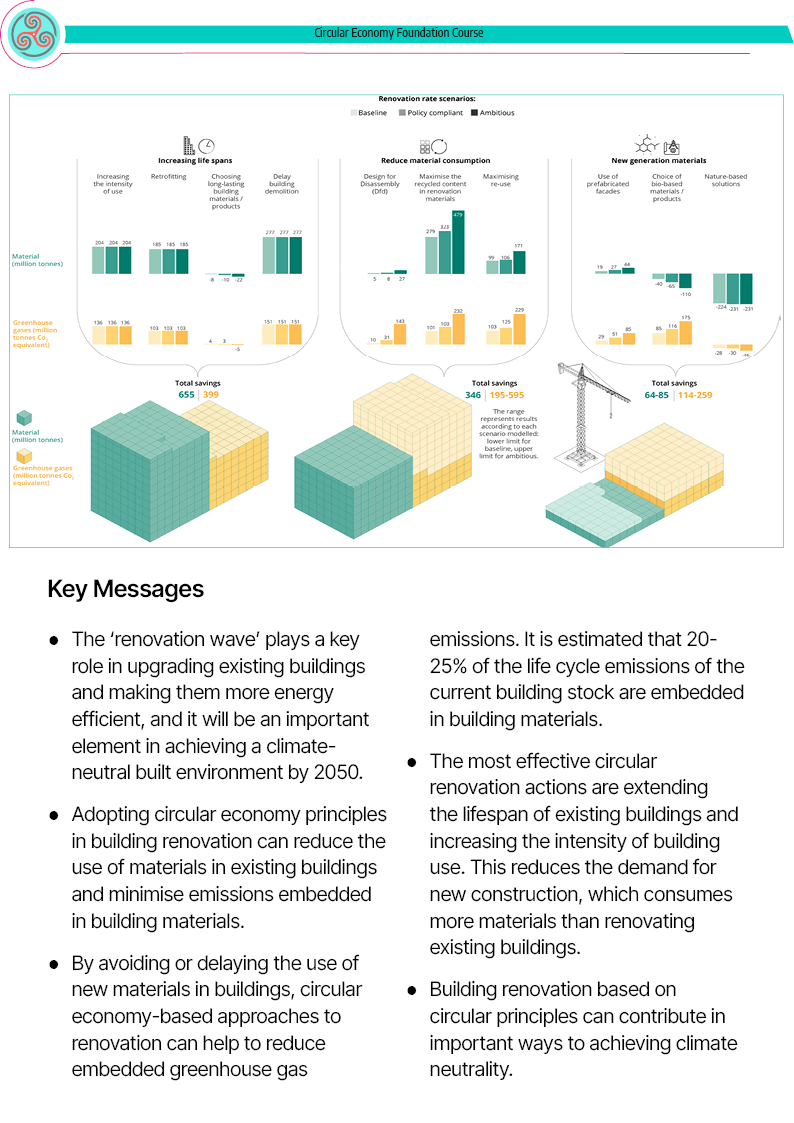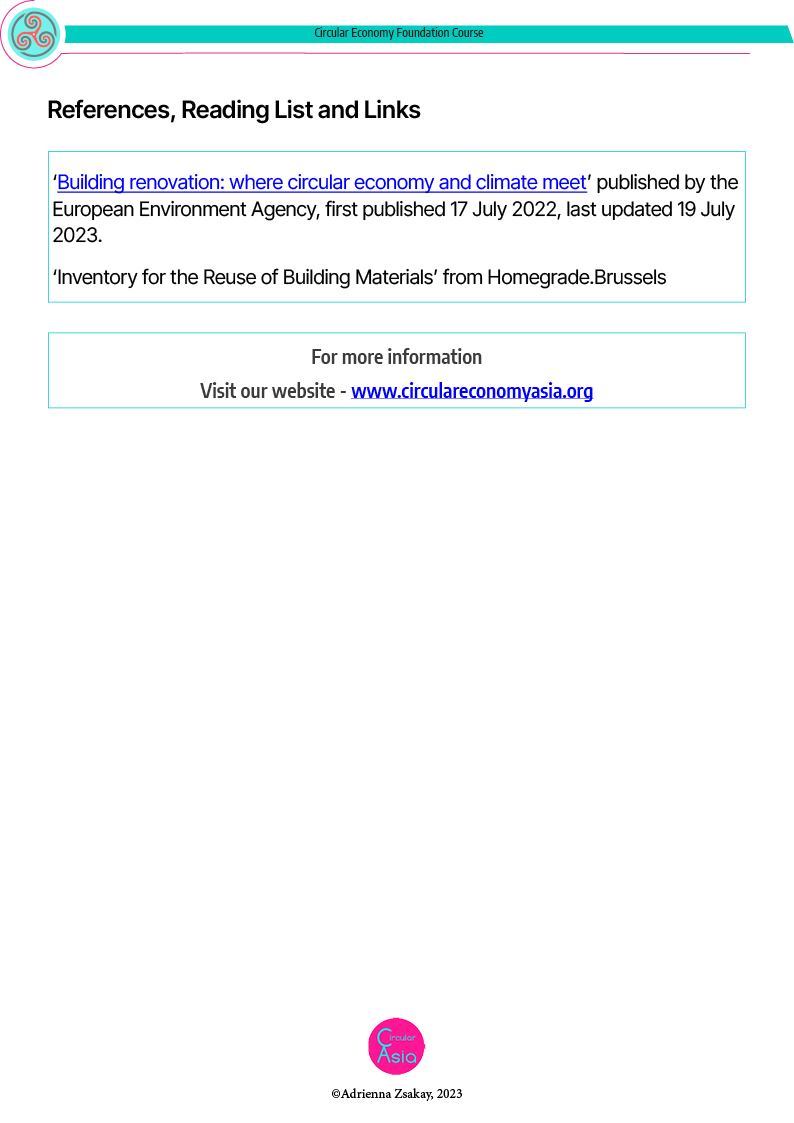Renovate – Part of the Circular Economy
Renovation, also called remodelling, is the process of improving broken, damaged, or outdated structures. It involves the act or process of repairing, renewing, or restoring something to a good condition. For example, you might renovate a building by repairing its structure, updating its design, or improving its functionality. Renovation often involves modernisation, restoration, redecoration, refurbishment, and revamping.
Click to enlarge and scroll images
The Circular Rs are part of the Circular Economy Foundation Course.
Renovate – An Economic Function of the Circular Economy
Renovation will play a key role in upgrading existing buildings and making them more energy-efficient, and it will be an important element in achieving a climate-neutral world by 2050. Adopting circular economy principles in building renovation can reduce the use of materials in existing buildings and minimise emissions embedded in building materials. The most effective circular renovation actions to reduce embedded emissions are extending the lifespan of existing buildings and increasing the intensity of building use. This reduces the demand for new construction, which consumes more materials than renovating existing buildings.
Ambitious circular renovation strategies could save significant amounts of GHG emissions up to 2050, depending on the scale of renovation. Building renovation based on circular principles can contribute important ways to achieving climate neutrality.
Download the eleventh: Renovate PDF file.![]()
References:
- ‘Building Renovation: Where Circular Economy and Climate Meet’ published by the European Environment Agency, 07 June 2022
- Renovate: Kiranshastry from Flaticon





